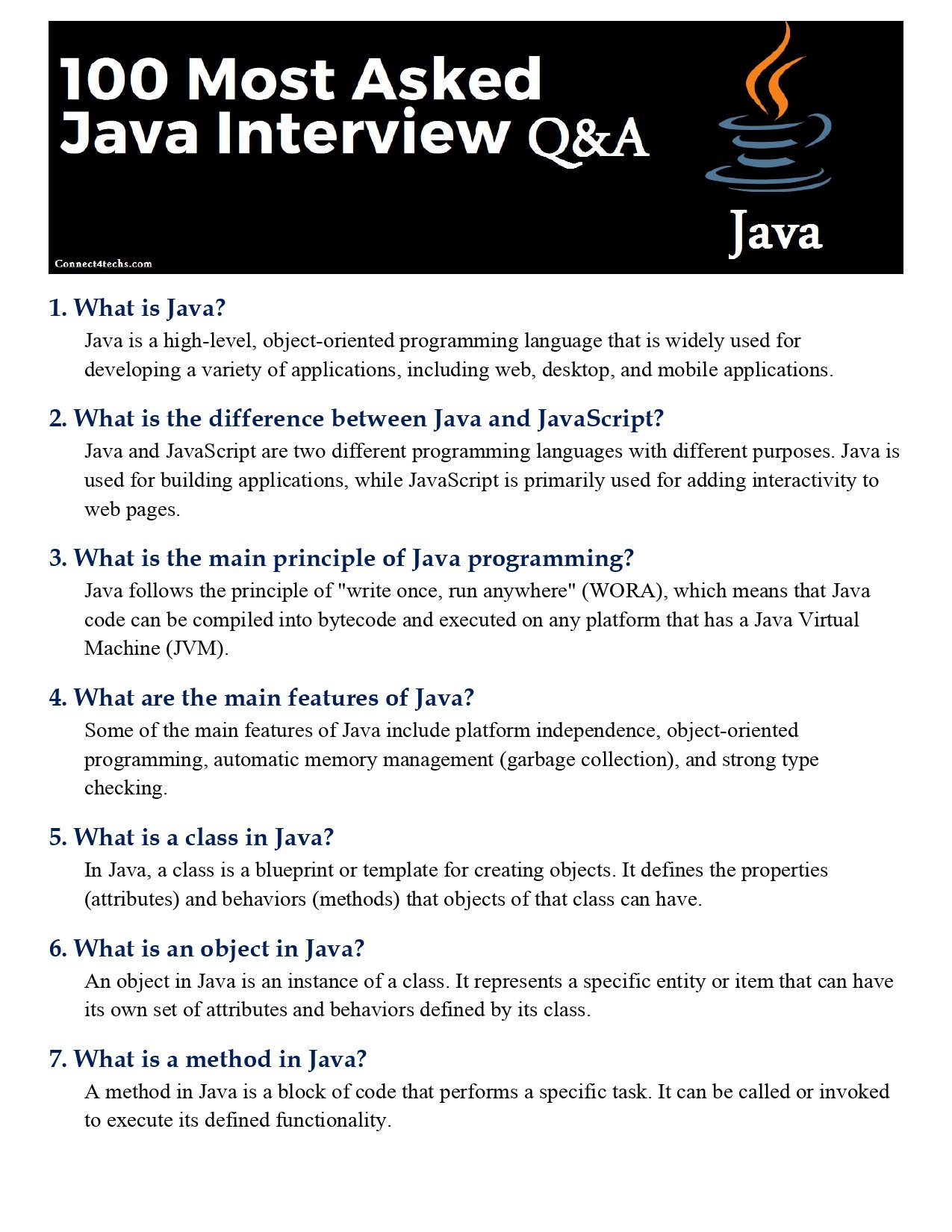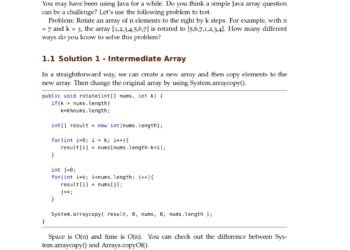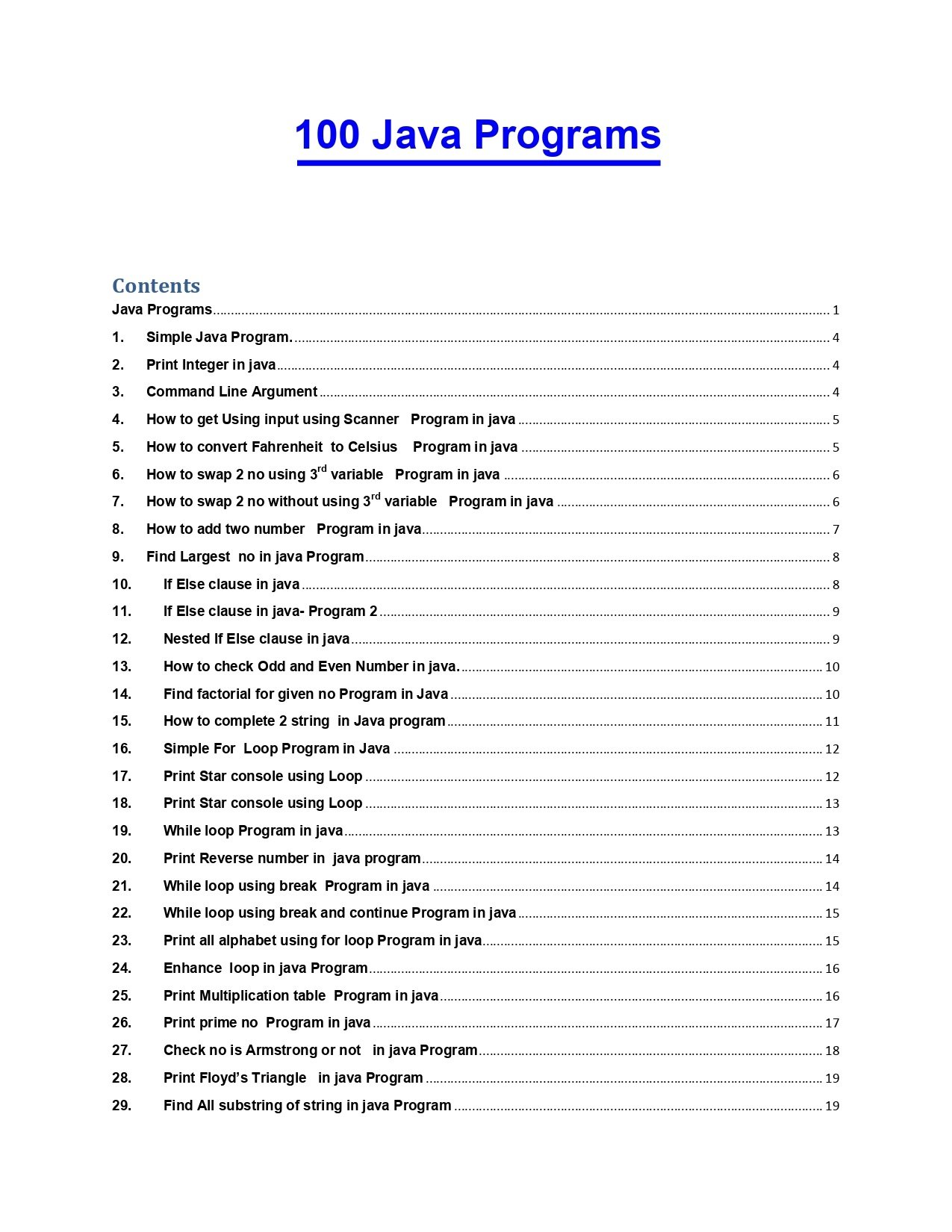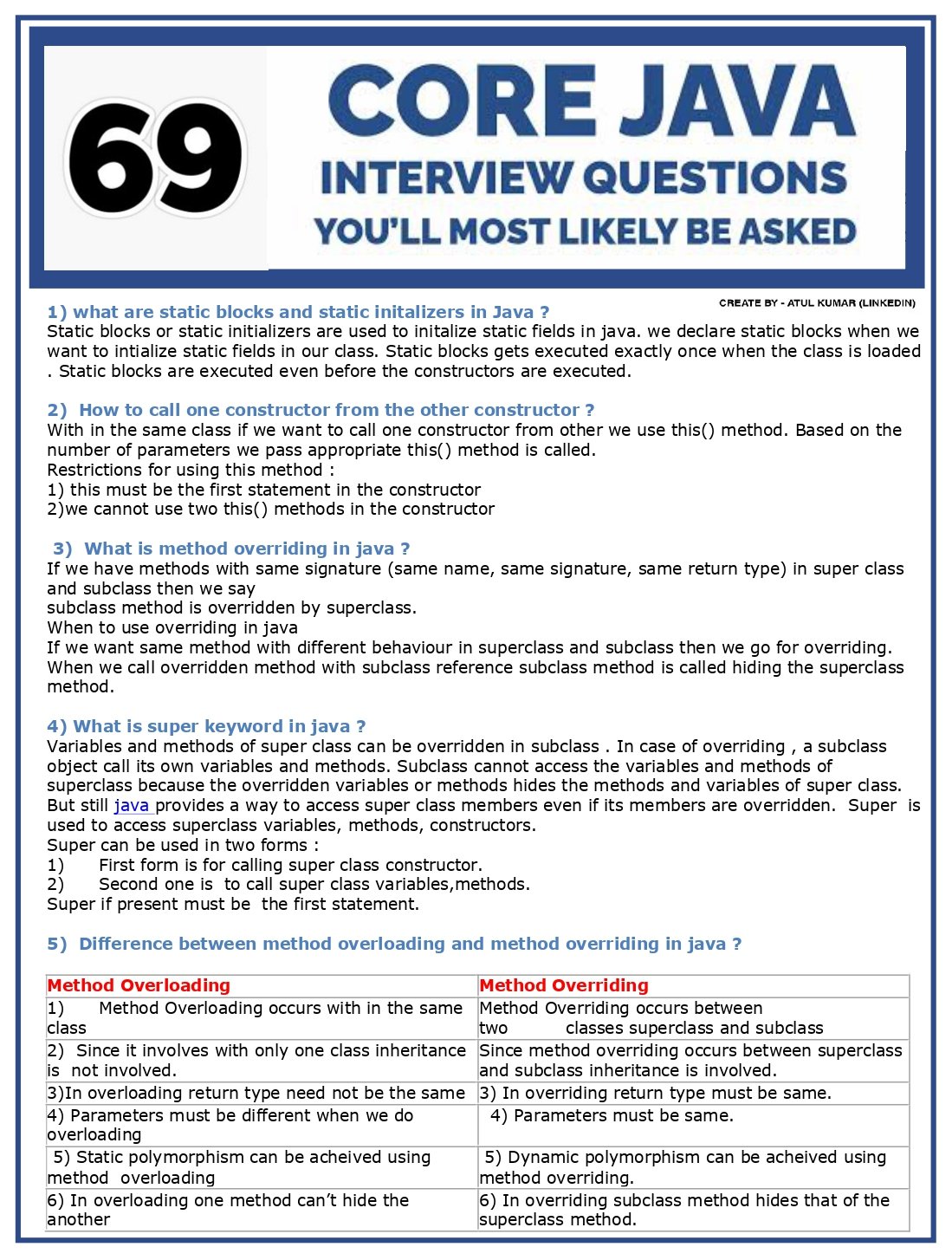Operators are symbols that perform specific operations on one or more operands, which are the values or variables that the operators act upon. Operators are used to manipulate data, perform calculations, compare values, assign values, control the flow of execution, etc.
In this blog post, I will introduce you to a PDF document that contains a complete and easy-to-understand tutorial on operators in Java, explaining their definition, classification, precedence, associativity, and examples.
Overview about the Notes
The PDF document that I am going to share with you is called “Java Tutorial – Operators in Java”.
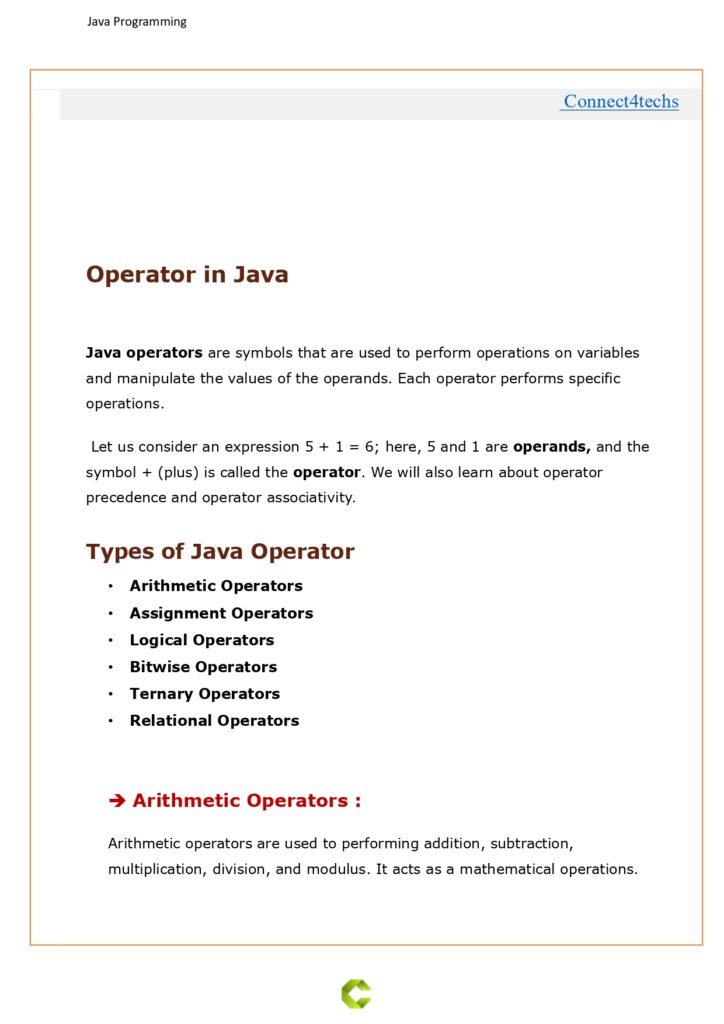
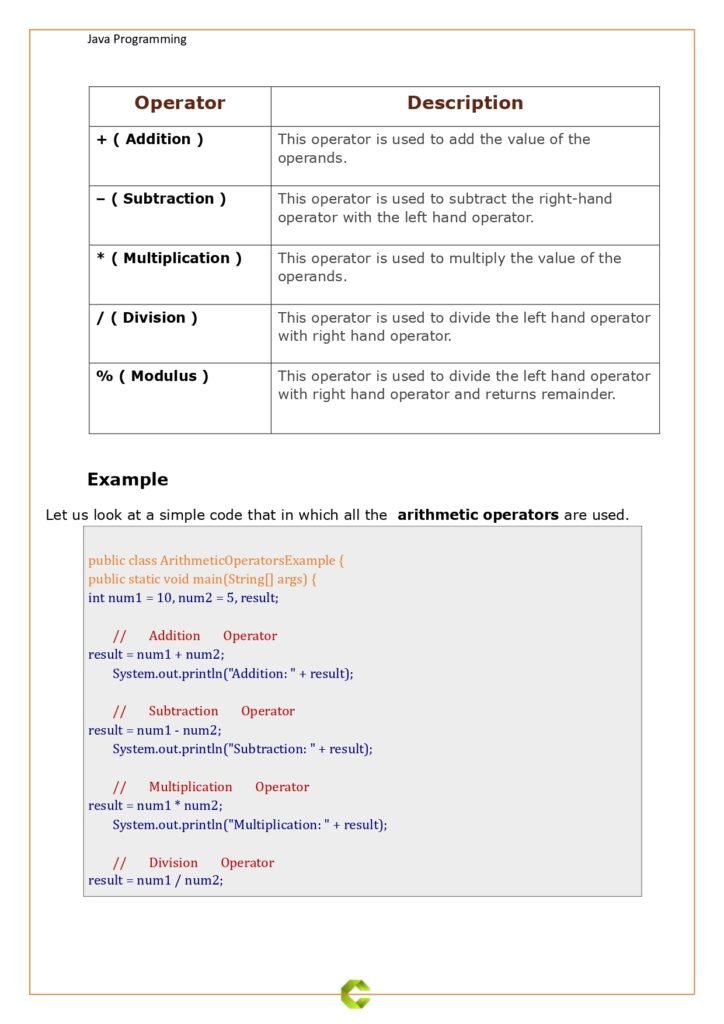
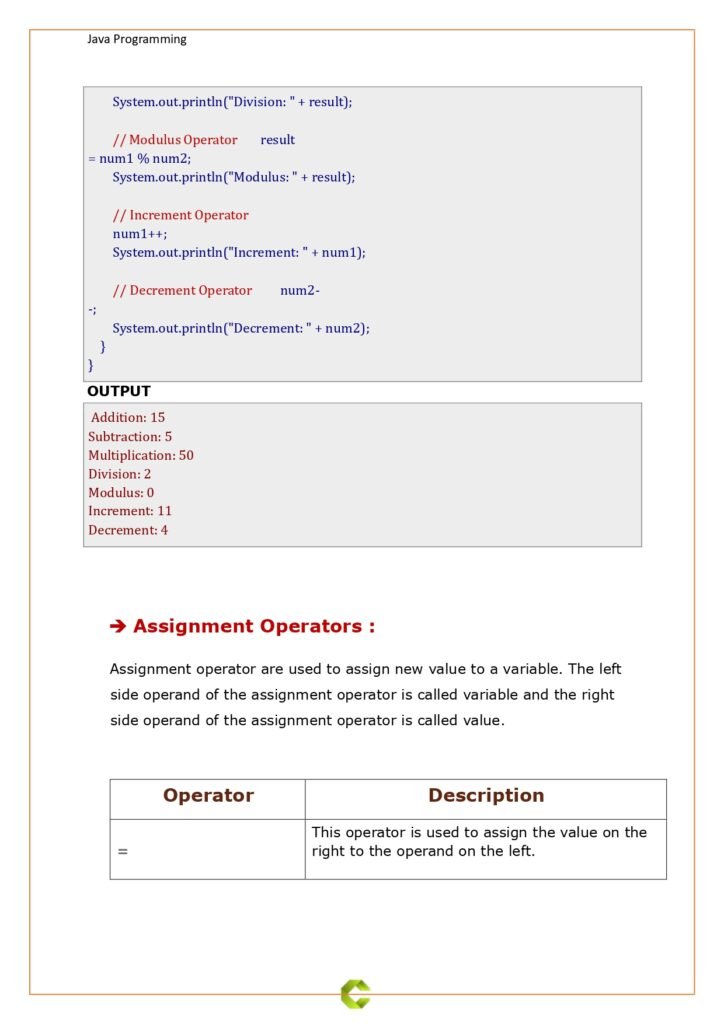
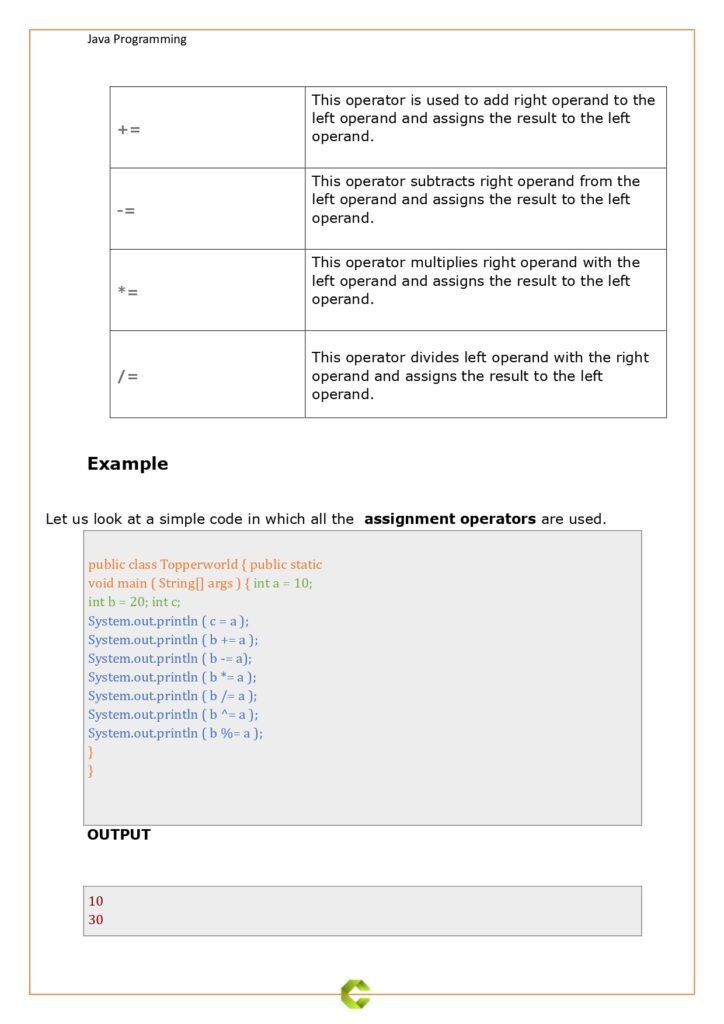
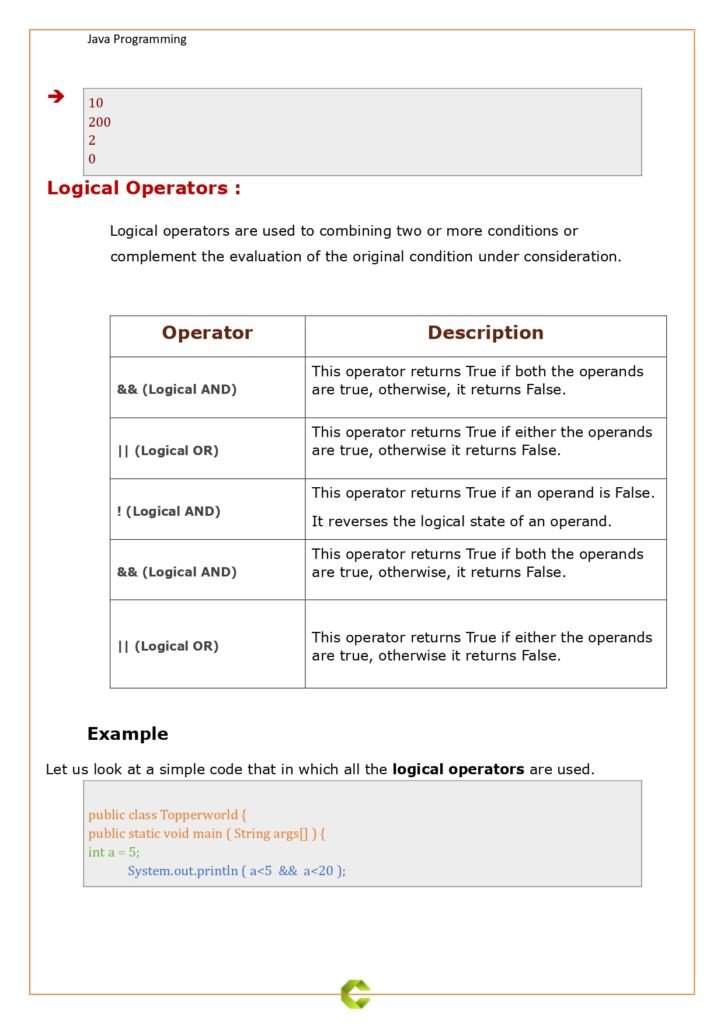
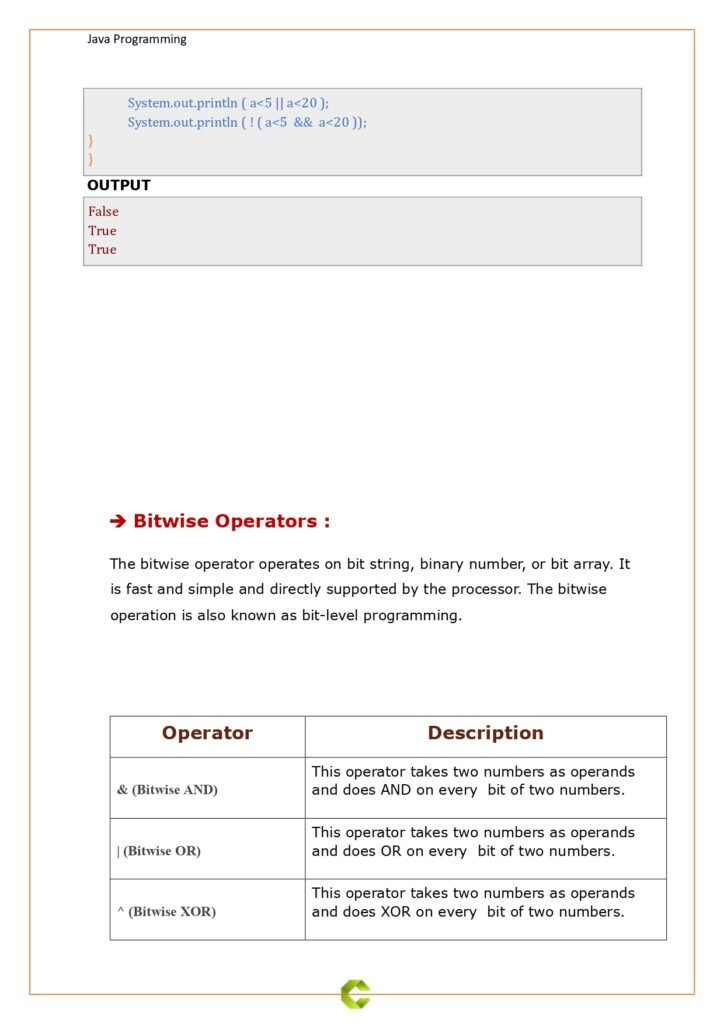
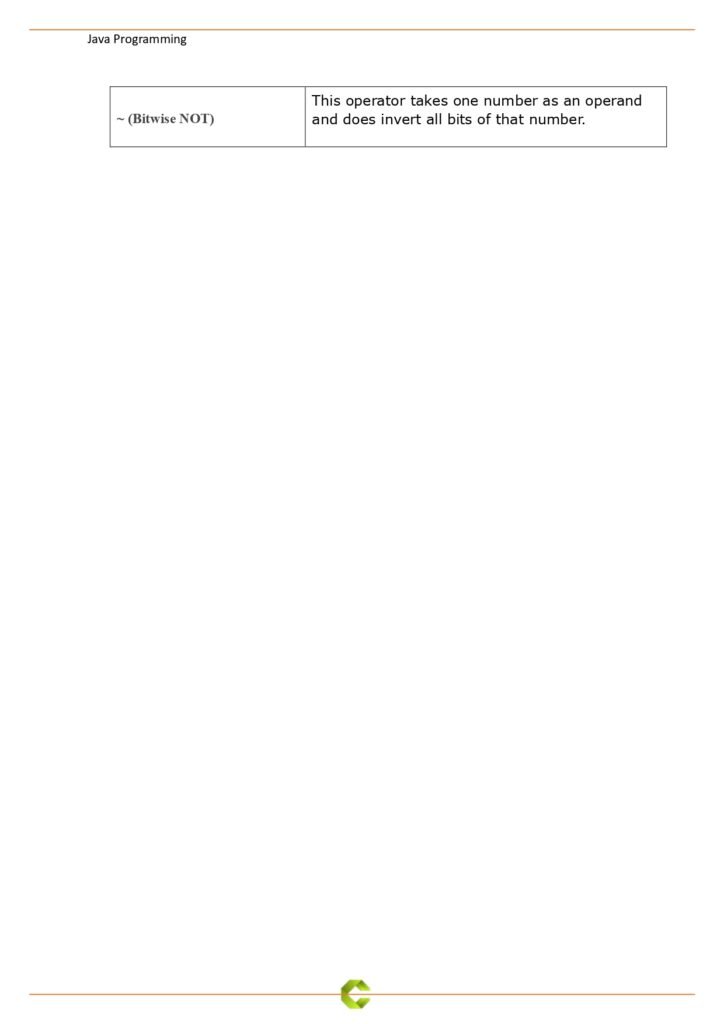

The document is divided into seven sections, each covering a different topic related to operators in Java. The sections are as follows:
- Section 1: What are Operators in Java?
- Section 2: What are the Arithmetic Operators in Java?
- Section 3: What are the Relational Operators in Java?
- Section 4: What are the Logical Operators in Java?
- Section 5: What are the Bitwise Operators in Java?
- Section 6: What are the Assignment Operators in Java?
- Section 7: What are the Unary Operators in Java?
Each section contains a clear and comprehensive explanation of the concepts, tables, diagrams, examples of code, and notes. The document also contains a summary, a list of references, and a quiz.
The Content of the Notes
The document covers the essential topics that you need to know to understand and use operators in Java. It assumes that you have some basic knowledge of Java, such as how to write and compile a simple Java program. However, it does not require any advanced knowledge of Java or its internals.
The document starts with an explanation of what are operators in Java, where it defines operators as symbols that perform specific operations on one or more operands, which are the values or variables that the operators act upon. It also explains the difference between operators and operands, and the difference between operators and expressions.
The document then moves on to the explanation of what are the arithmetic operators in Java, where it shows the five arithmetic operators in Java, which are +, -, *, /, and %. It also shows the precedence and associativity of the arithmetic operators, and how to use them to perform addition, subtraction, multiplication, division, and modulus operations on numeric operands.
The document also covers the explanation of what are the relational operators in Java, where it shows the six relational operators in Java, which are ==, !=, <, >, <=, and >=. It also shows the precedence and associativity of the relational operators, and how to use them to compare the values of two operands and return a boolean result.
The document then explains what are the logical operators in Java, where it shows the three logical operators in Java, which are &&, ||, and !. It also shows the precedence and associativity of the logical operators, and how to use them to perform logical AND, OR, and NOT operations on boolean operands.
The document also covers the explanation of what are the bitwise operators in Java, where it shows the six bitwise operators in Java, which are &, |, ^, ~, <<, and >>. It also shows the precedence and associativity of the bitwise operators, and how to use them to perform bitwise AND, OR, XOR, NOT, left shift, and right shift operations on integer operands.
The document then explains what are the assignment operators in Java, where it shows the 12 assignment operators in Java, which are =, +=, -=, *=, /=, %=, &=, |=, ^=, <<=, >>=, and >>>=. It also shows the precedence and associativity of the assignment operators, and how to use them to assign values to variables, and to perform arithmetic, bitwise, and shift operations and assign the result to the same variable.
The document also covers the explanation of what are the unary operators in Java, where it shows the four unary operators in Java, which are +, -, ++, and --. It also shows the precedence and associativity of the unary operators, and how to use them to perform unary plus, unary minus, increment, and decrement operations on single operands.
Why This Notes
This PDF document is a great resource for anyone who wants to learn or review operators in Java. It is written by an experienced and qualified software engineer and author of a popular website that provides high-quality articles and tutorials on various topics related to Java and other programming languages. It is based on the latest version of Java and follows the best practices and standards of the language. It is complete and easy-to-understand, covering all the essential topics in a clear and concise way. It is also interactive and engaging, providing tables, diagrams, examples, and notes to help you understand and use operators in Java. It is also free and accessible, available for download from the link below.
Conclusion
Operators are symbols that perform specific operations on one or more operands, which are the values or variables that the operators act upon. Operators are used to manipulate data, perform calculations, compare values, assign values, control the flow of execution, etc. If you want to learn or review operators in Java, you should definitely check out this PDF document that contains a complete and easy-to-understand tutorial on operators in Java. It will help you understand the definition, classification, precedence, associativity, and examples of operators in Java. It will also help you write and run your own Java programs and explore the possibilities of the language.
Download from Link
You can download the PDF document “Java Tutorial – Operators in Java” from this link: [Java Tutorial – Operators in Java (PDF)].
I hope you find it useful and enjoyable. Happy learning! 😊.



